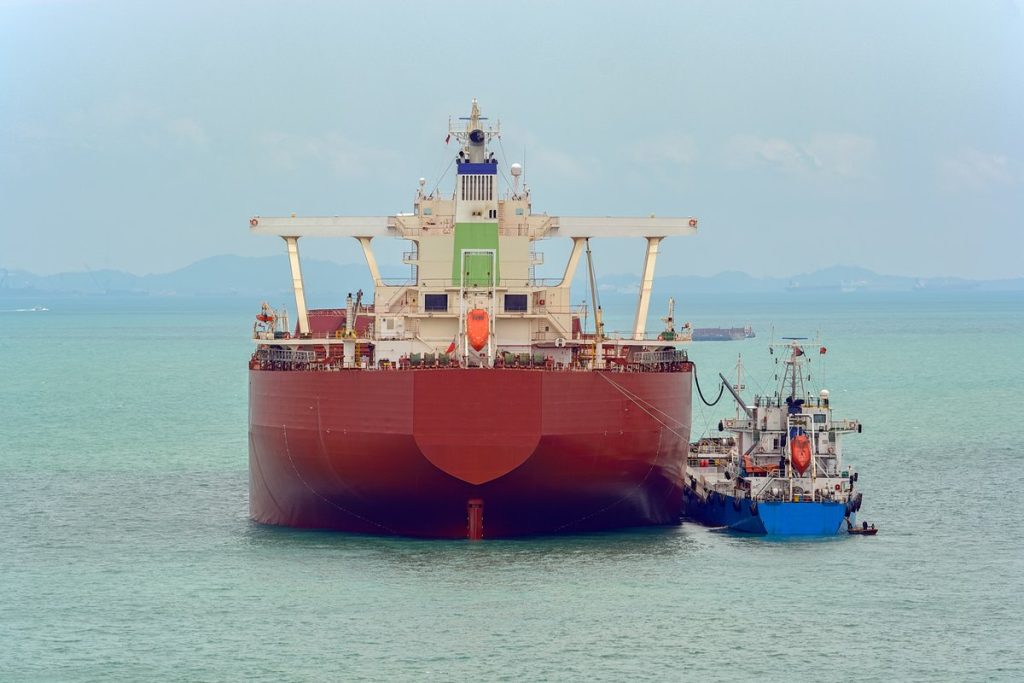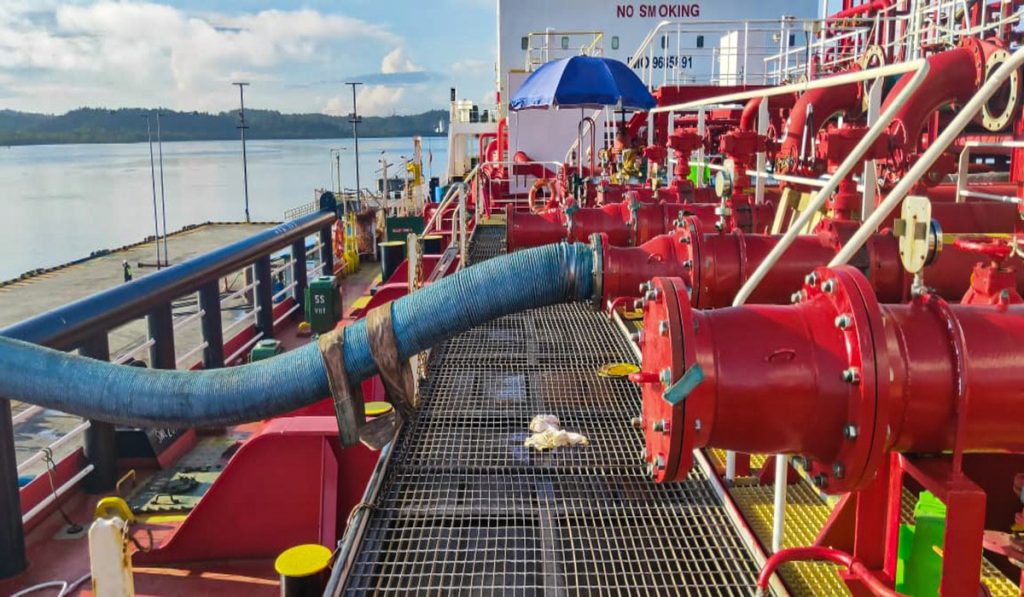Bunkering is one of the most critical processes in maritime operations. The safe and efficient transfer of fuel not only ensures vessel performance but also directly affects compliance, operational continuity, and environmental protection. Understanding the procedure for bunkering operation on a ship is therefore essential for shipowners, operators, and charterers, especially as regulations tighten and fuel options diversify across global ports.
At Ibérica Marítima, we provide full coordination and operational support for marine bunkering across the ports. Our role goes beyond logistics, we ensure each operation meets the highest standards in safety, compliance, and timing.
This guide outlines the bunkering process, applicable regulations, safety measures, and the strategic value of working with an experienced ship agent to avoid delays and reduce risk.
What is bunkering and why it’s crucial in maritime operations
Definition and purpose of bunkering
Bunkering refers to the supply of fuel to ships, whether fuel oil, marine gasoil, LNG, or newer alternative fuels. Although the term “bunkering meaning” originated from the coal bunkers of early steamships, it now applies to any bunkering of fuel used for propulsion or onboard operations.
Understanding this definition is essential because bunkering directly influences voyage planning and vessel endurance, requires strict compliance with MARPOL environmental regulations, and involves coordinated action among crew, suppliers, surveyors, port authorities, and agents. It is also a process with inherent risks, from spills and contamination to quantity disputes, making clear procedures vital for safe and efficient operations.
How bunkering impacts vessel efficiency and safety
Proper marine bunkering contributes to:
- Operational efficiency: ensuring vessels depart with correct fuel quantities and specifications.
- Engine performance: wrong or contaminated fuel can cause significant damage.
- Voyage reliability: delays in bunkering disrupt schedules and charter commitments.
- Regulatory compliance: improper documentation or safety procedures may result in fines or detentions.
A seamless bunkering operation protects both the vessel and the commercial interests involved.
Types of bunkering and fuel options
Ship-to-Ship (STS) Bunkering
In ship-to-ship bunkering, fuel is transferred from a bunker barge to a vessel while both are afloat. This method offers flexibility and speed, especially in ports with space constraints. Barge bunkering requires precise maneuvering, careful mooring, and continuous communication to avoid spills or misalignment.

Shore-to-Ship Bunkering
Fuel is pumped directly from onshore storage tanks through pipelines. This method is common in major commercial ports, offering high pumping rates, stable connections, and lower spill risks. It is often used for large bunkering of ship quantities and regulated through strict local protocols.
Truck-to-Ship Bunkering
Ideal for smaller quantities or ports without fixed bunkering pipelines, truck-to-ship bunkering uses tanker trucks positioned on the quay. While flexible, it requires tight control of hose connections, grounding, and traffic safety.
Standard procedure for bunkering operation
Pre-bunkering preparation and safety checks
Preparation is the backbone of bunkering safety. Key steps include:
- Reviewing fuel order specifications (grade, sulphur content, quantity).
- Confirming MARPOL Annex VI compliance and supplier credentials.
- Preparing checklists and safety permits (e.g., Safety Checklists, Declaration of Inspection).
- Ensuring crew briefings on roles, emergency stops, and communication channels.
- Testing communication systems between vessel and bunker supplier.
- Inspecting hoses, connections, and drip trays.
- Verifying mooring and ship stability.
Pre-bunkering checks significantly reduce the likelihood of spills, fuel incompatibility, or transfer interruptions.
During bunkering: monitoring and communication
The actual fuel transfer requires continuous supervision:
- Starting pumps at low flow rates to confirm tightness.
- Monitoring for leaks, pressure anomalies, or vibration.
- Keeping constant watch at manifold areas.
- Recording tank soundings or flowmeter readings.
- Maintaining clear communication between crew, supplier, and surveyor.
- Ensuring drip trays and spill kits remain in position.
Consistency and vigilance during bunkering prevent operational and environmental incidents.
Post-bunkering: verification and documentation
Once the bunkering operation is completed, the verification phase begins. The vessel’s tanks are sounded again to confirm the actual volume received, and all transfer lines are safely drained and disconnected. These measurements are then compared and validated with the supplier to ensure full agreement. The process concludes with the issuance and signing of the Bunker Delivery Note (BDN) and the corresponding entries in the oil record book. This accurate and transparent documentation is essential both for regulatory compliance and for preventing commercial disputes.
Bunker survey: verifying delivered fuel quantity and integrity
What is a Bunker Survey and why it’s needed
Fuel quantity discrepancies are a frequent concern in the bunkering of ship operations. A bunker survey provides an independent assessment before, during, and after the transfer, verifying both the quantity delivered and the condition of the fuel. This oversight brings essential transparency to the process and helps identify issues such as short deliveries, water contamination, incorrect density or temperature adjustments, or unreported residues in the tanks.
Steps involved in a bunker survey
A standard survey includes:
- Pre-delivery gauging of bunker barge or shore tanks
- Confirmation of fuel specifications and sampling procedures
- Monitoring the entire bunkering process
- Post-delivery gauging to calculate exact fuel transferred
- Laboratory analysis of representative samples
- Issuance of a detailed survey report
How bunker surveys prevent fuel discrepancies and disputes
Bunker surveys play a crucial role in avoiding discrepancies by documenting every stage of marine bunkering with clear measurements and evidence. This creates a defensible record that offers legal protection in quantity disputes. At the same time, surveys verify that the fuel meets MARPOL standards and engine requirements, reducing the risk of off-spec bunkers and potential machinery damage. By adding transparency and independent verification, bunker surveys strengthen trust among all parties involved in the fuel supply chain.
Bunkering safety and compliance requirements
MARPOL and SOLAS regulations
Bunkering operations are strictly regulated under international and local frameworks. MARPOL Annex I and VI set the standards for preventing pollution and controlling fuel emissions, while SOLAS requires compliant fire safety measures, safe transfer procedures, and full emergency preparedness.
In many ports, local regulations add an additional layer of requirements that can be even more stringent. Failure to meet these obligations can lead to fines, operational delays, or even vessel detention, making regulatory compliance an essential part of every bunkering operation.
Essential documentation: BDN and oil record book
The Bunker Delivery Note (BDN) is mandatory and must include:
- Fuel grade and sulphur content.
- Density and viscosity.
- Quantity delivered.
- Supplier identity and MARPOL confirmation.
The Oil Record Book must record every bunkering operation in detail.
Emergency response and spill prevention
Emergency response and spill prevention are fundamental elements of safe bunkering operations. Effective precautions include keeping spill-containment tools and absorbent materials readily available, ensuring that emergency stop procedures are clearly displayed and regularly tested, and verifying that fire-fighting equipment is fully operational. Clear, immediate communication channels with port authorities must also be in place.
Together, these measures form a robust safety framework that protects the vessel, the port, and the surrounding environment during every bunkering operation.
Risks during bunkering and how to prevent them
Bunkering operations carry several operational and environmental risks that must be carefully managed. Fuel spills can occur through hose failures, tank overflows or simple human error, while inaccurate measurements may lead to quantity disputes between the vessel and the supplier. Contaminated fuel can compromise engine performance, and fire hazards (often linked to leaks or static electricity) require constant vigilance.
Preventing these risks depends on thorough preparation, continuous supervision throughout the transfer, clear communication between vessel and supplier, the presence of certified surveyors, and the coordination of experienced agents who oversee every step of the operation.

The importance of the ship agent during bunker operations
Bunkering requires coordination between multiple actors. A skilled ship agent plays an essential role in ensuring smooth operations, particularly in high-traffic or highly regulated ports.
Our bunkering services
As a specialized ship agent with deep expertise in tanker operations, Ibérica Marítima provides:
- End-to-end coordination with bunker suppliers
- Supervision of compliance and all required documentation
- Arrangement of bunker surveys when applicable
- Constant communication with crew, terminals, and port authorities
- Support with port regulations and safety protocols
- 24/7 assistance across all ports we operate
With over 60 years of experience and presence in more than 110 ports, we ensure bunkering operations are smooth, compliant, and efficient, avoiding delays and minimizing risk.
Safe, efficient and compliant fueling for every voyage
The procedure for bunkering operation on a ship requires precision, expertise, and strict adherence to safety and environmental regulations.
At Ibérica Marítima, we combine deep knowledge, trusted supplier networks, and hands-on operational support to deliver reliable and compliant marine bunkering services. Whether through barge bunkering, shore pipelines, or truck-to-ship transfers, we ensure that every operation is safe, transparent, and aligned with international standards.
Reliable fueling is the foundation of maritime logistics. With us as your partner, you ensure efficient, compliant, and uninterrupted bunkering for every voyage.



